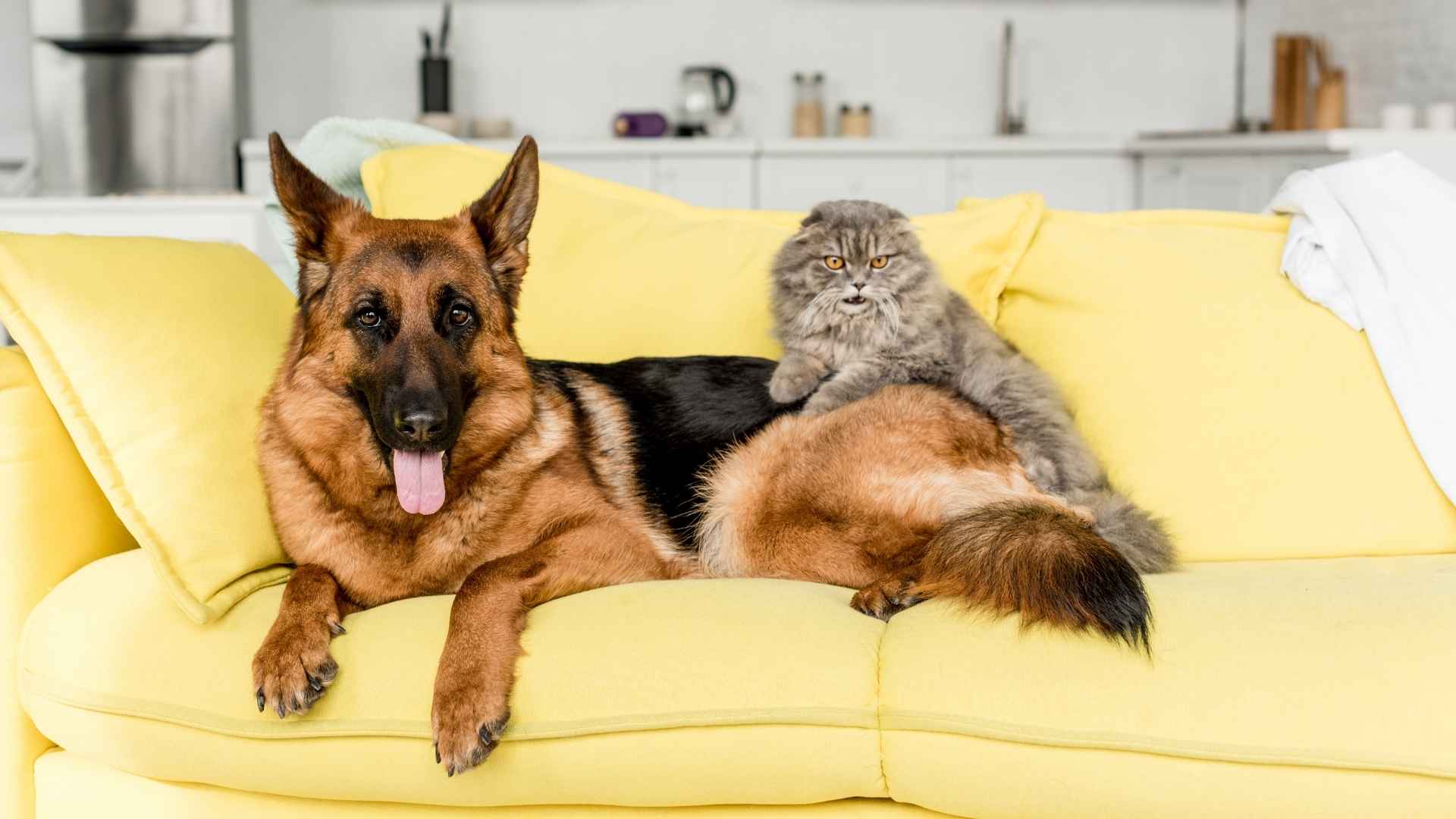Not all guard dogs are bred to protect just humans or property—some display remarkable loyalty by extending their guardianship to fellow animals in the household. These exceptional breeds instinctively watch over cats, rabbits, birds, and even smaller dogs as if they were part of their own pack.
Their natural protectiveness, coupled with calm and measured temperaments, makes them ideal for multi-pet homes where harmony and security matter just as much as vigilance.
While typical guard dogs are often prized for their size, strength, and ability to ward off intruders, the dogs in this list stand out for their nurturing instincts. They’re loyal, affectionate, and highly observant—ready to step in when their animal companions need protection. Their gentle approach with smaller or more vulnerable pets doesn’t dilute their watchful presence—it enhances it.
So if you’re searching for a breed that will not only keep your home safe but also take your other pets under their wing, this guide highlights the most remarkable guardians in the canine world.
Dog Breeds That Guard Other Pets as Their Own
1. Cane Corso
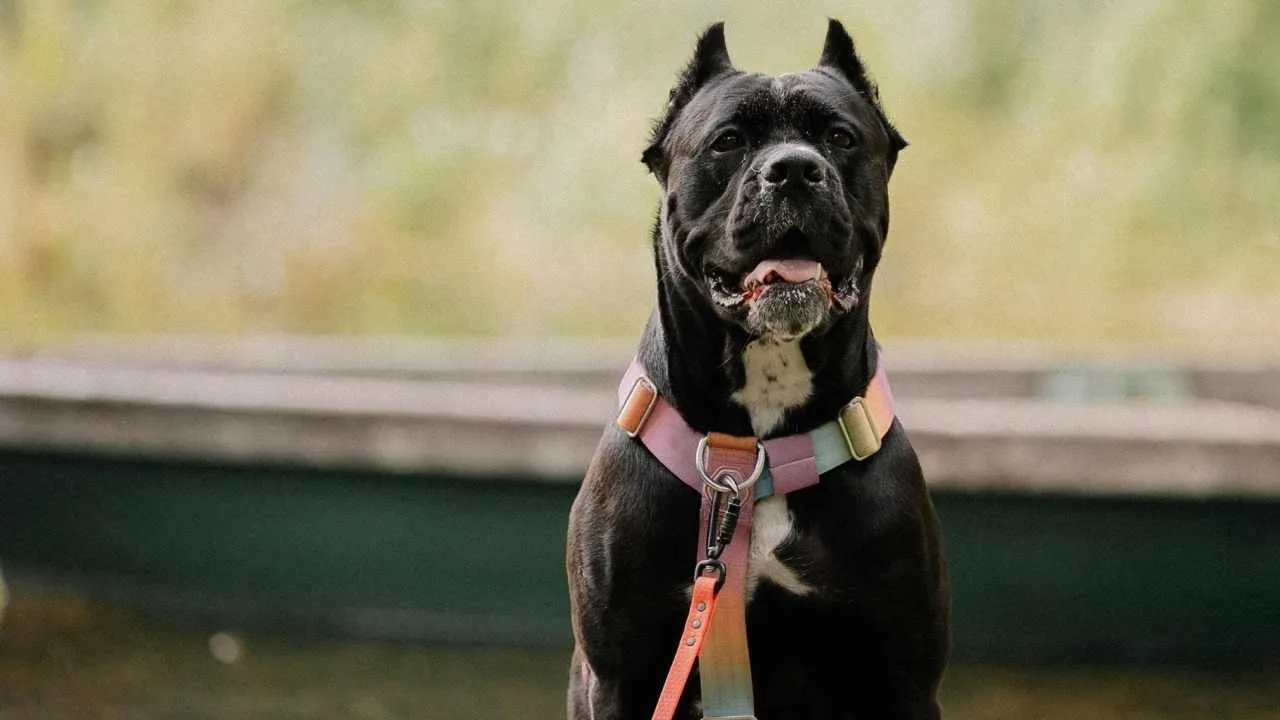
The Cane Corso, also known as the Italian Mastiff, is a commanding and confident guardian with roots tracing back to ancient Rome. The AKC emphasizes that its striking and formidable appearance serves as an effective initial deterrent to potential intruders.
Originally bred as a war and watchdog, this powerful working breed is known for its muscular build, deep bark, and unwavering loyalty. Male Cane Corsos typically stand between 25 and 27.5 inches tall and weigh 99 to 110 pounds, while females range from 23.5 to 26 inches in height and weigh between 88 and 99 pounds.
Their short, coarse coats come in black, gray, fawn, and red, often with brindle patterns or a distinct facial mask. They live for around 10 to 12 years and thrive when given a purpose or task.
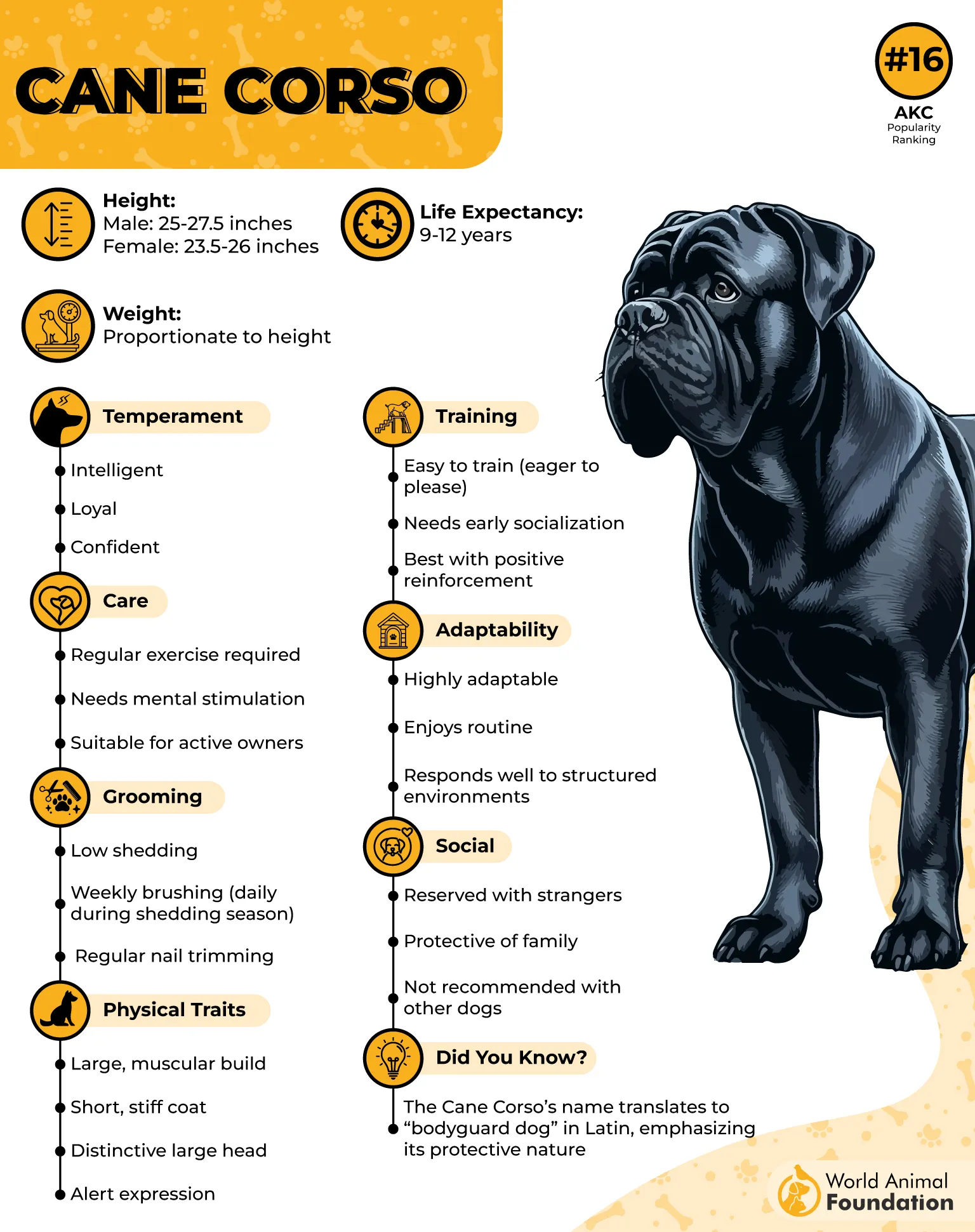
Ideal Owner
These excellent guard dog breeds do best with experienced, confident owners who can provide firm guidance, structured training, and plenty of exercise. Ideally, they should live with someone who is home most of the time and can provide the companionship and stimulation this intelligent breed needs.
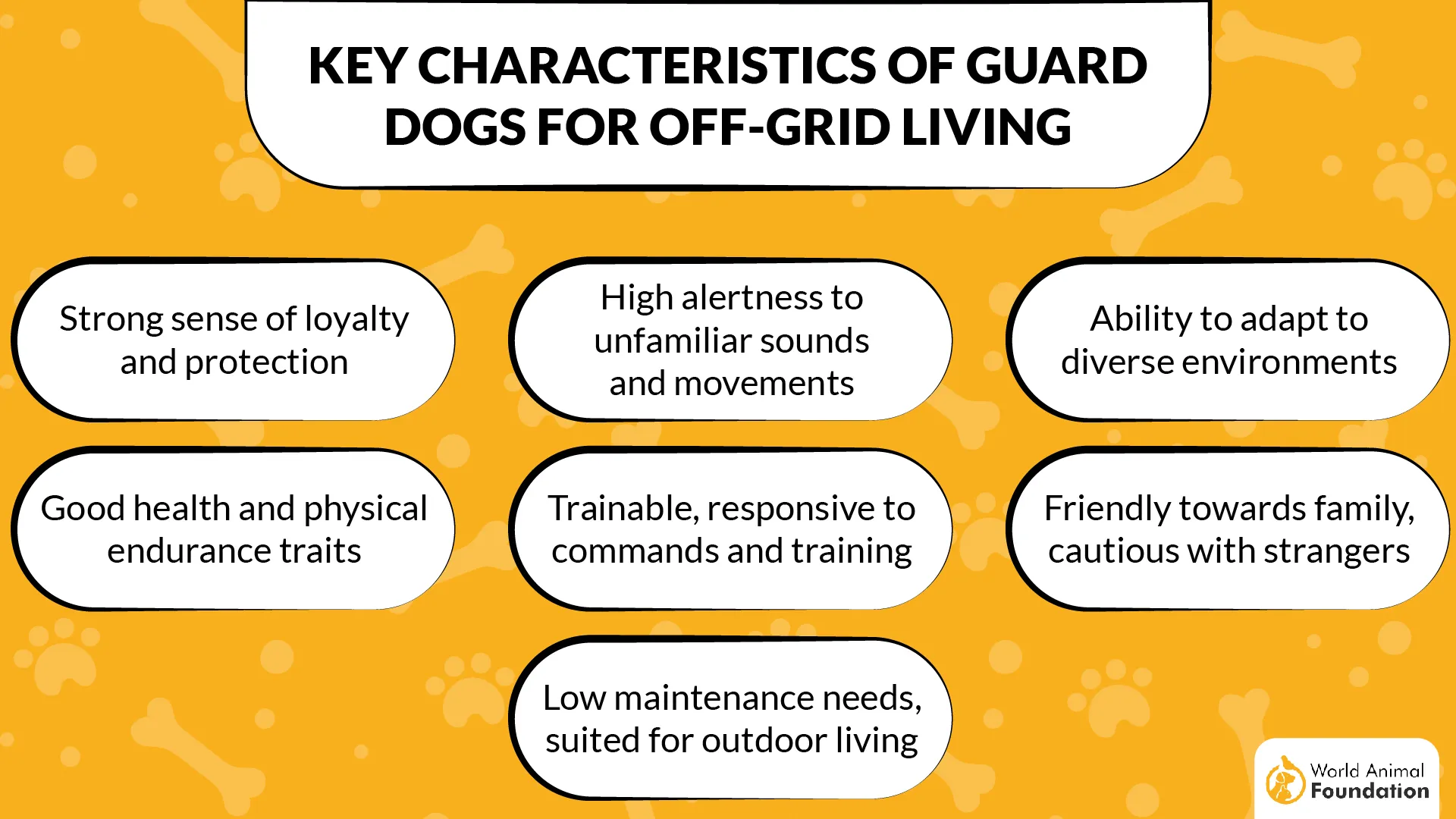
While they drool and eat a lot, their devotion and strong protective instincts more than compensate. With proper socialization, they not only guard humans but can extend their watchful nature to other family pets.
Fun Fact: The name “Cane Corso” means “bodyguard dog” in Latin—a title they’ve earned through centuries of fearless protection.
2. Rottweiler
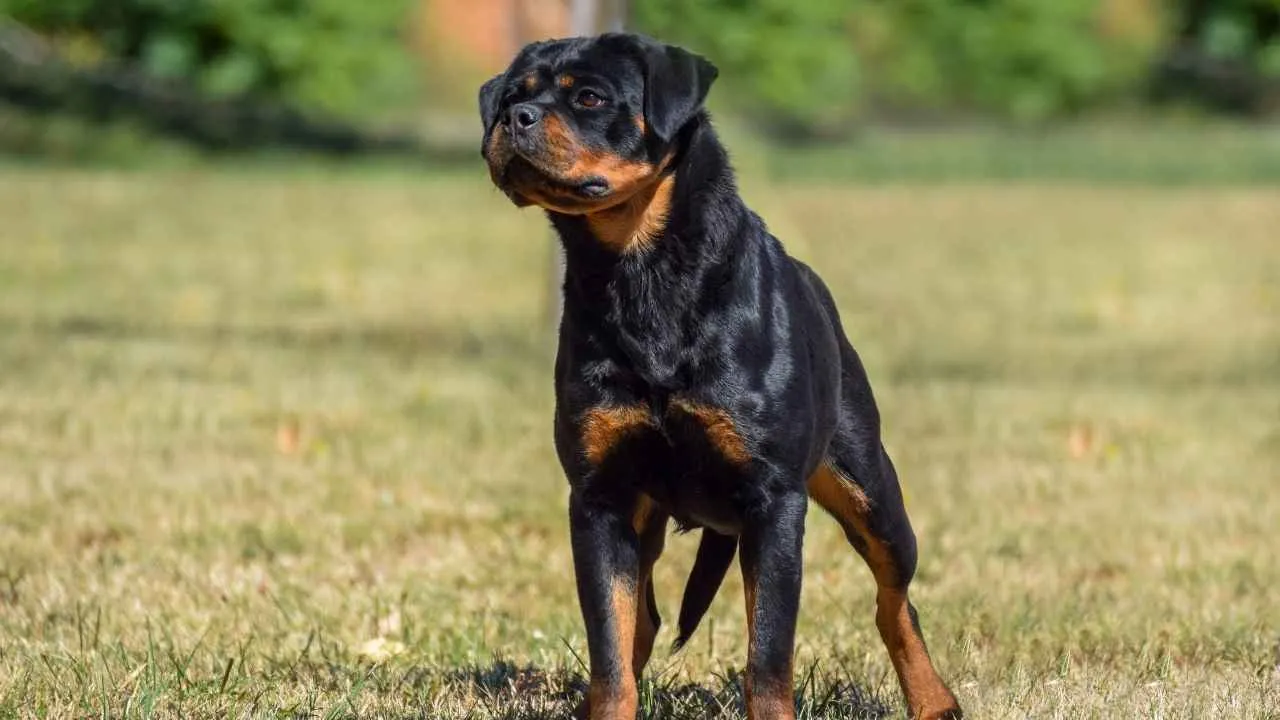
The Rottweiler, sometimes affectionately called a “Rottie,” is a robust and loyal breed with a heritage tracing back to Roman times. These dogs were once used to herd and guard cattle, later evolving into dependable butchers’ dogs and capable working animals across various roles—from rescue operations to service work.
They are recognized by the AKC under the Working Group. WebMD states that male Rottweilers typically stand between 24 and 27 inches tall at the shoulders (or withers), while females are a bit shorter, usually measuring between 22 and 25 inches.
They have a short, coarse double coat that comes in black with rust, mahogany, or tan markings. With a lifespan of 8 to 10 years, they are admired for their confident, intelligent demeanor and strong guarding instincts.
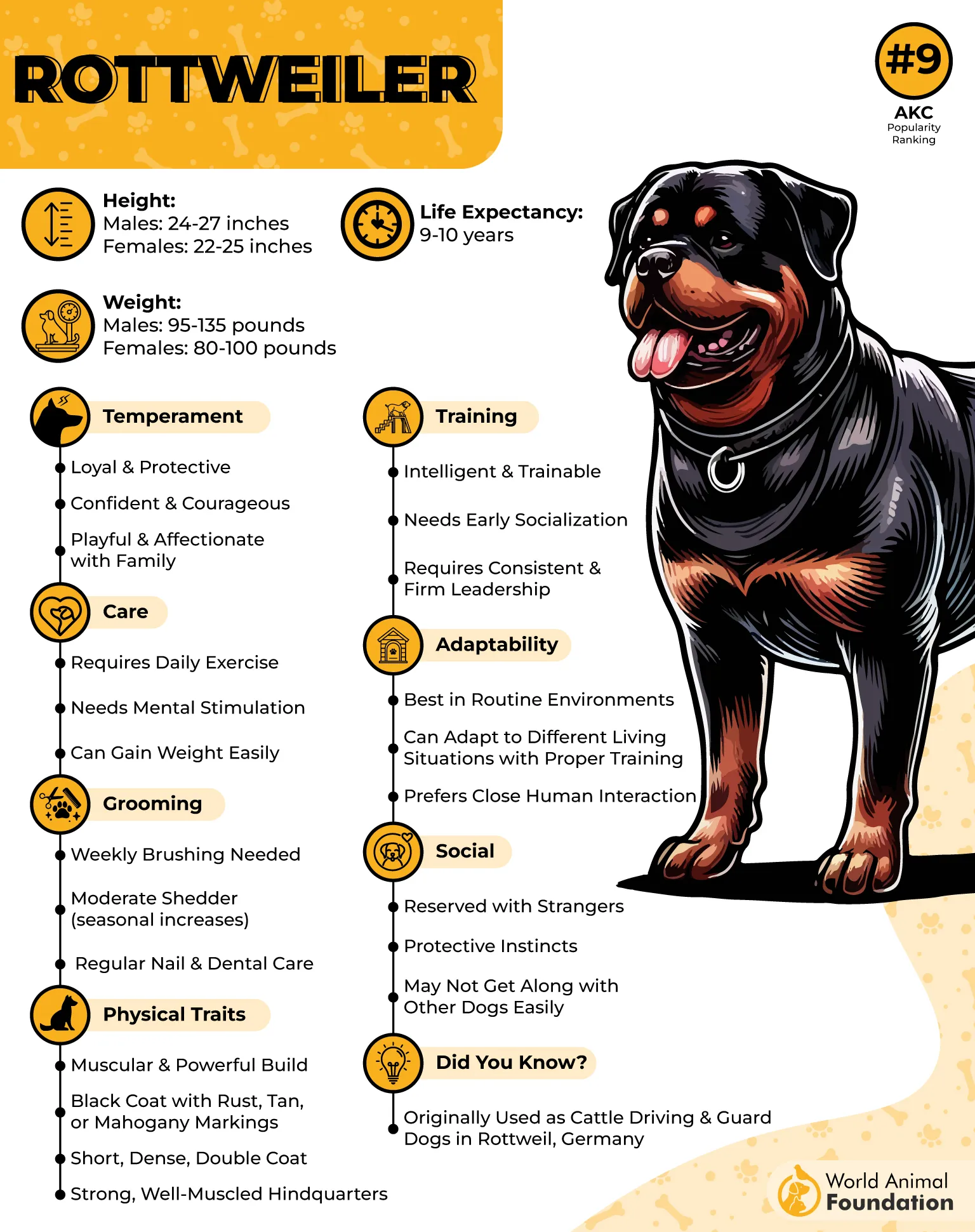
Ideal Owner
These herding dogs are best suited for experienced dog owners who can provide structure, socialization, and mental stimulation. They thrive with families who understand the importance of training and can meet the breed’s need for purpose.
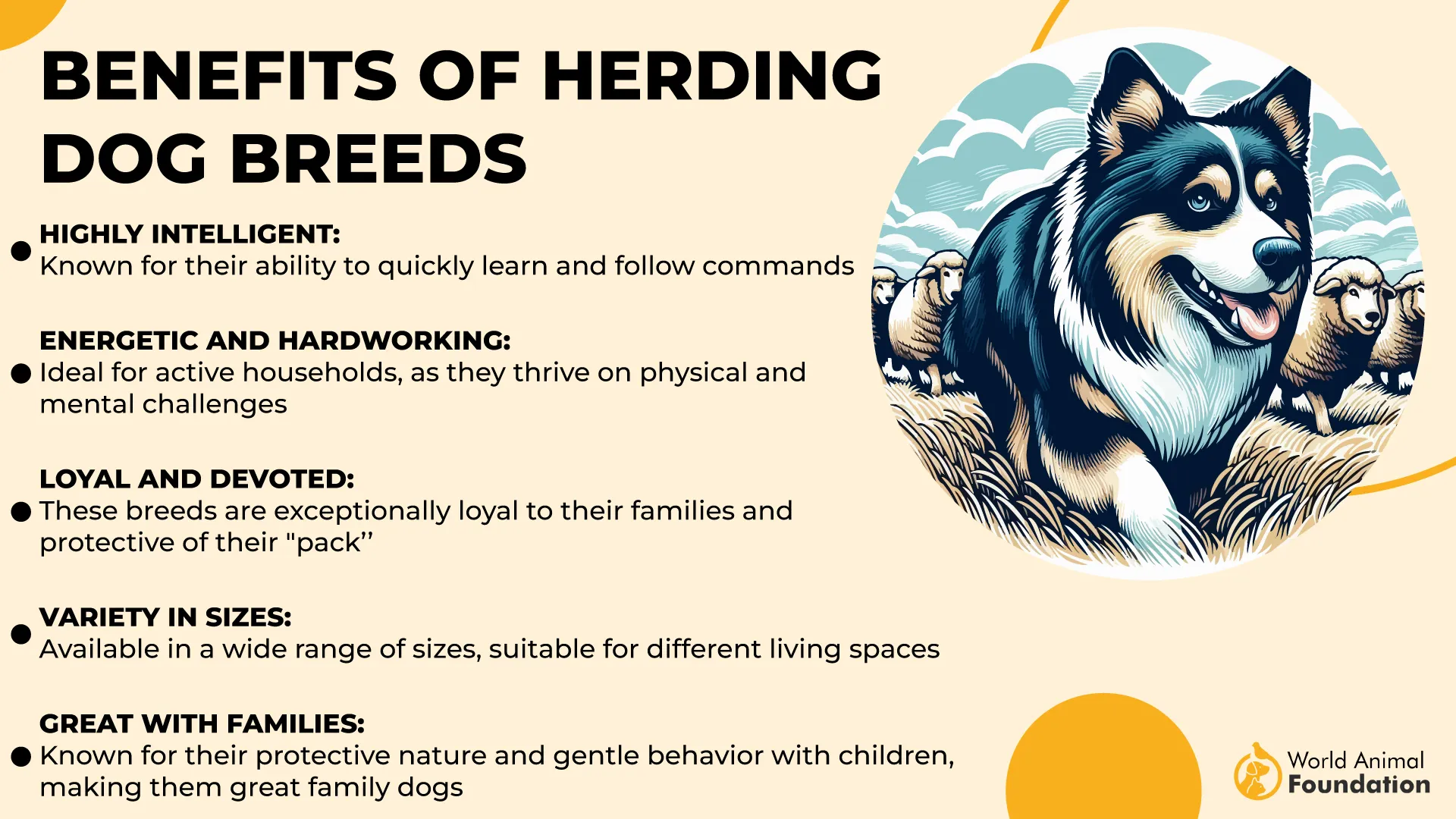
While they are known for guarding, a well-socialized Rottweiler can be affectionate with children and harmonious with other pets, offering both protection and companionship.
Fun Fact: Despite their intimidating looks, Rottweilers have a lower aggression level than some small breeds.
3. Belgian Malinois
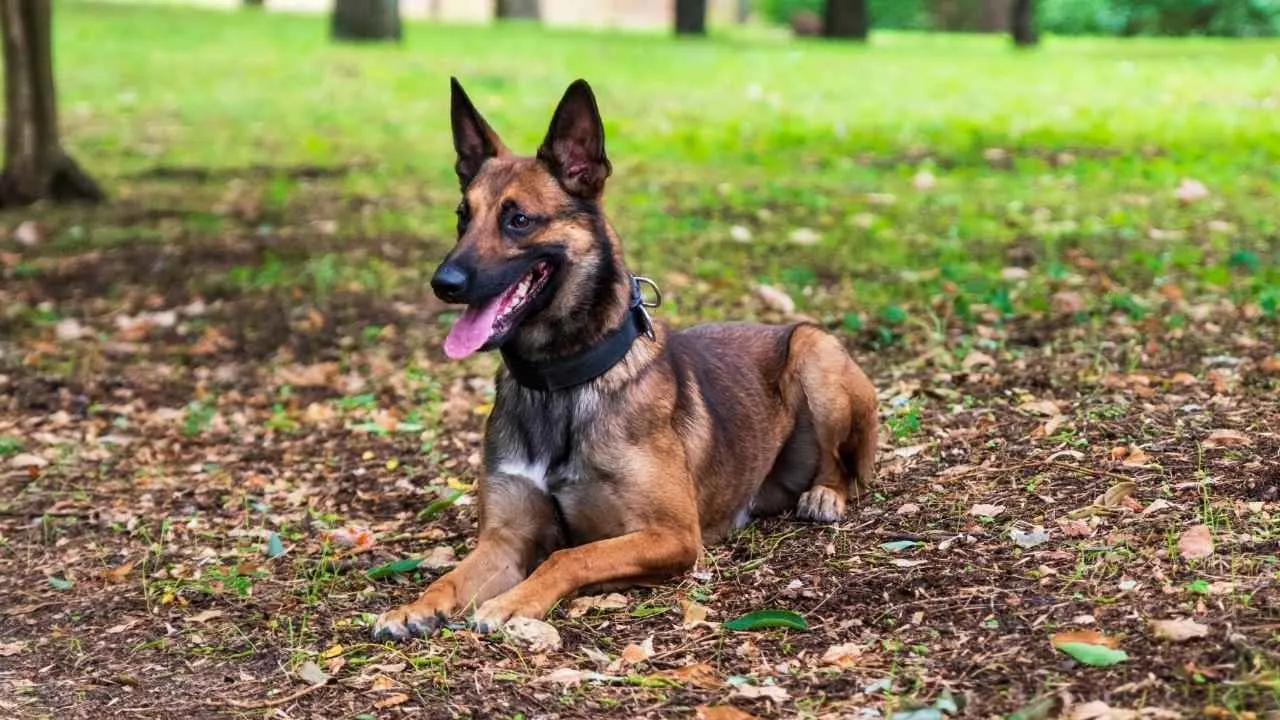
The Belgian Malinois, often mistaken for the German Shepherd, is a powerful and intelligent member of the AKC’s Herding Group. PetMD explains that this Belgian breed was initially developed for herding, but its intelligence and eagerness to work have made it well-suited for various roles such as police work, search and rescue, and bomb and drug detection.
With a height of 22 to 26 inches and weight ranging from 40 to 80 pounds, this agile dog is known for its intense drive, unwavering loyalty, and high trainability. Malinois possess a short double coat in hues like fawn, mahogany, and red, always accented with a distinct black mask. Their life expectancy is 14 to 16 years.
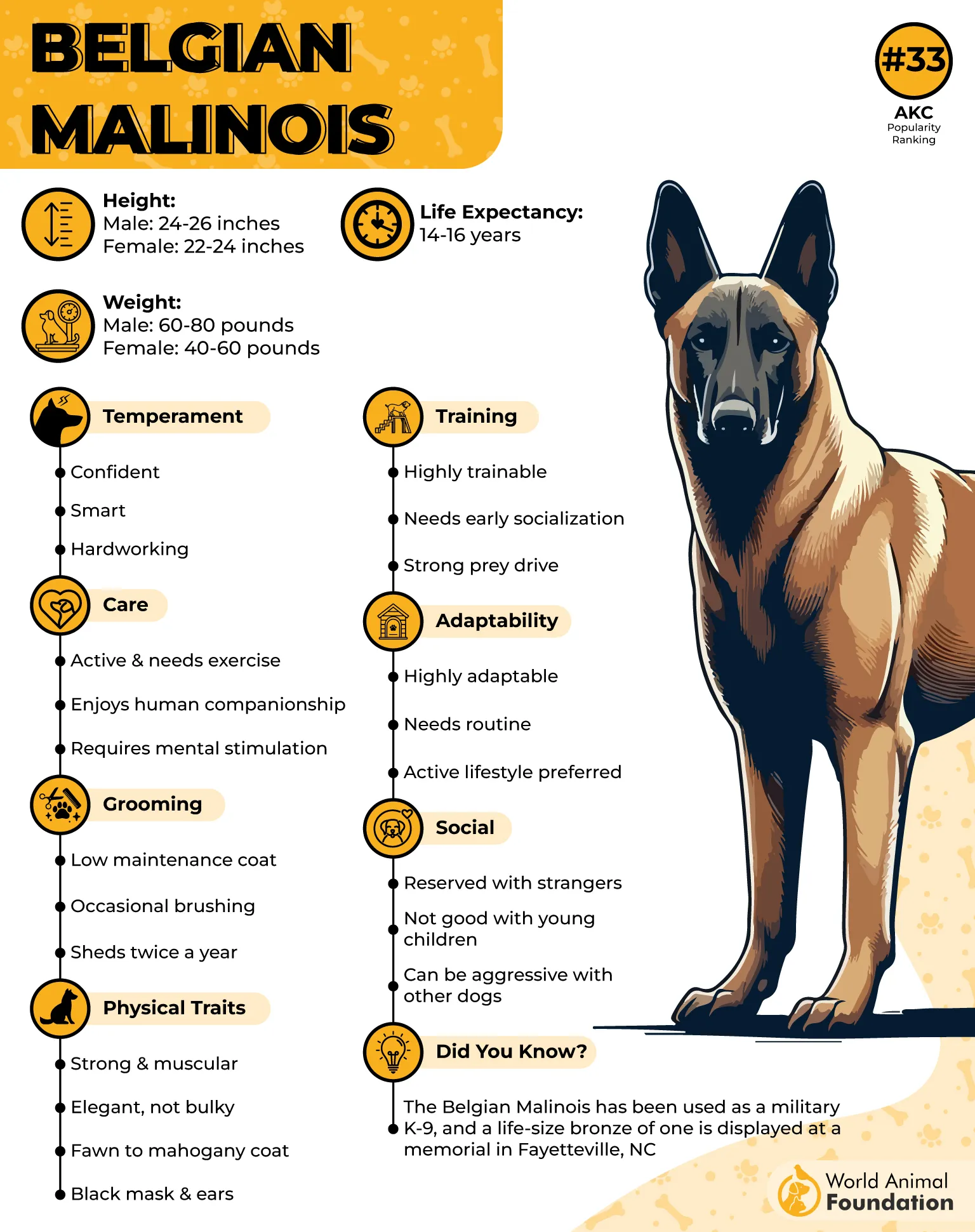
Ideal Owner
Belgian Malinois thrive best with experienced and active owners who understand their need for both physical activity and mental stimulation. They’re not ideal for apartment living or novice dog owners.
Instead, they do well with individuals or families who enjoy running, hiking, or engaging in competitive canine sports like herding and agility. Without adequate training and enrichment, they may develop destructive behaviors due to boredom.
Fun Fact: One of the most iconic Malinois served in a U.S. Navy SEAL team that captured Osama bin Laden—a testament to their intelligence and bravery.
4. Bullmastiff
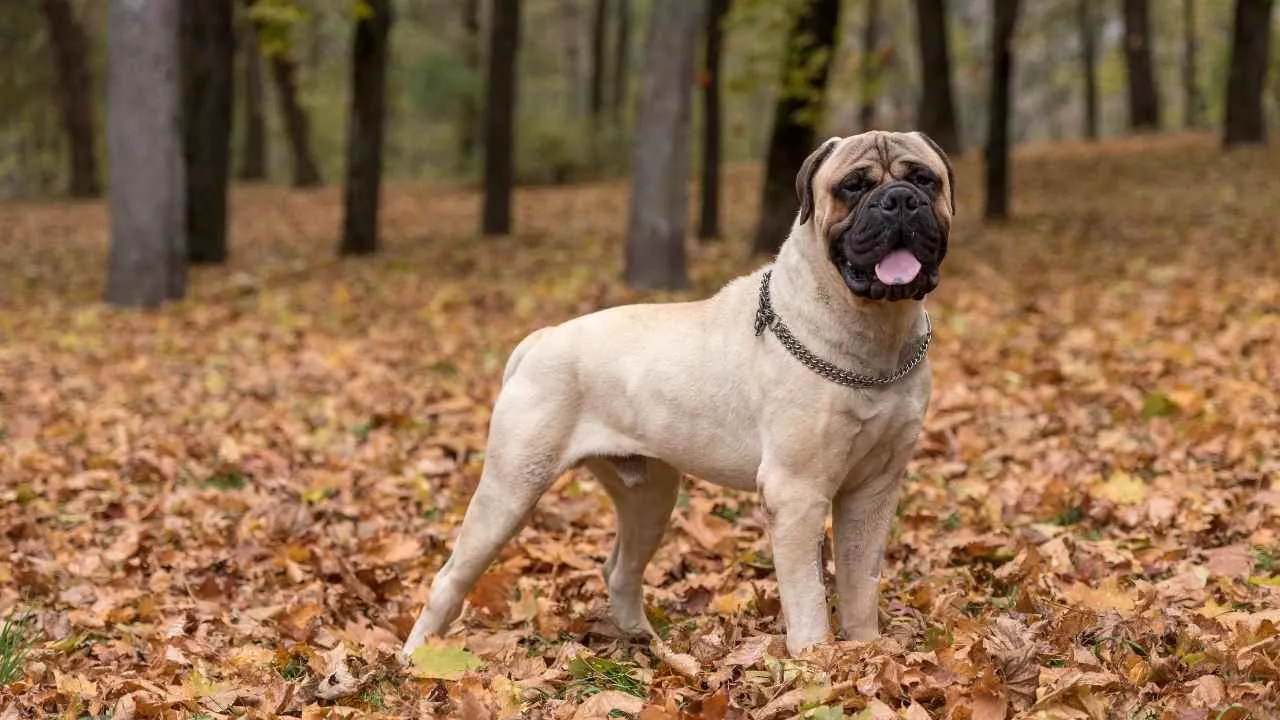
Originally developed in 19th-century England, the Bullmastiff is a formidable yet affectionate guardian bred from Bulldogs and Mastiffs to protect estates from poachers. These large, muscular dogs stand between 24 to 27 inches tall and weigh from 100 to 130 pounds.
Their short coat comes in rich shades like brindle, fawn, or red, typically accompanied by a signature black mask. Although they appear intimidating, Bullmastiffs are calm, loving family members known for their quiet confidence and low bark tendency. Classified in the Working Group by the AKC, they typically live 8 to 10 years and thrive on companionship and structure.
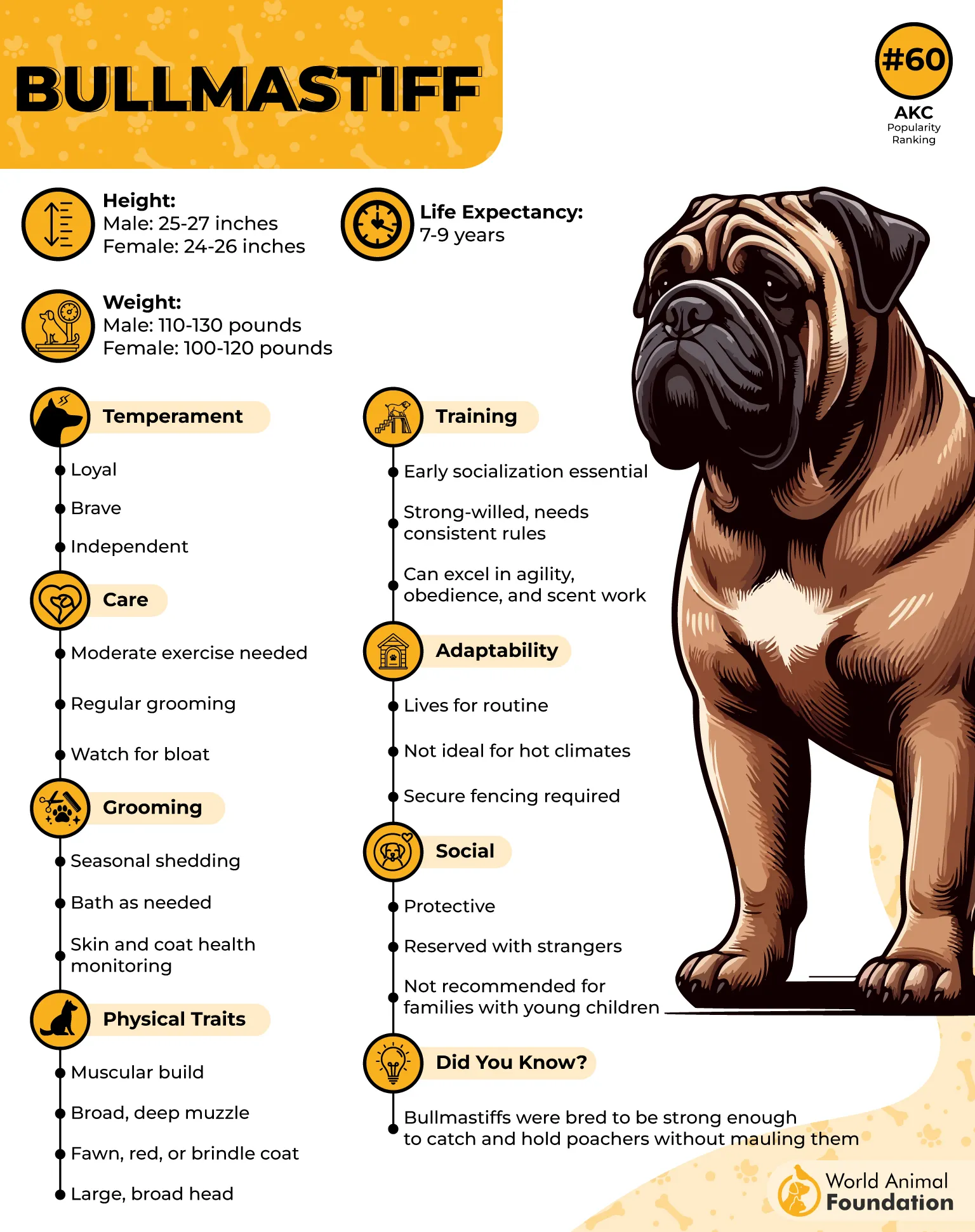
Ideal Owner
These giant breeds are best suited for experienced dog owners who can offer consistent training and socialization from an early age. Ideal homes have older children and enough space for a large breed to move around.
These dogs don’t require excessive exercise but do need daily walks and mental stimulation. While generally affectionate and patient with other pets in the household, Bullmastiffs need supervised introductions and early exposure to varied environments to develop reliable behavior.
Fun Fact: Sylvester Stallone’s real-life Bullmastiff, Butkus, famously appeared alongside him in the original Rocky movies.
5. Akita
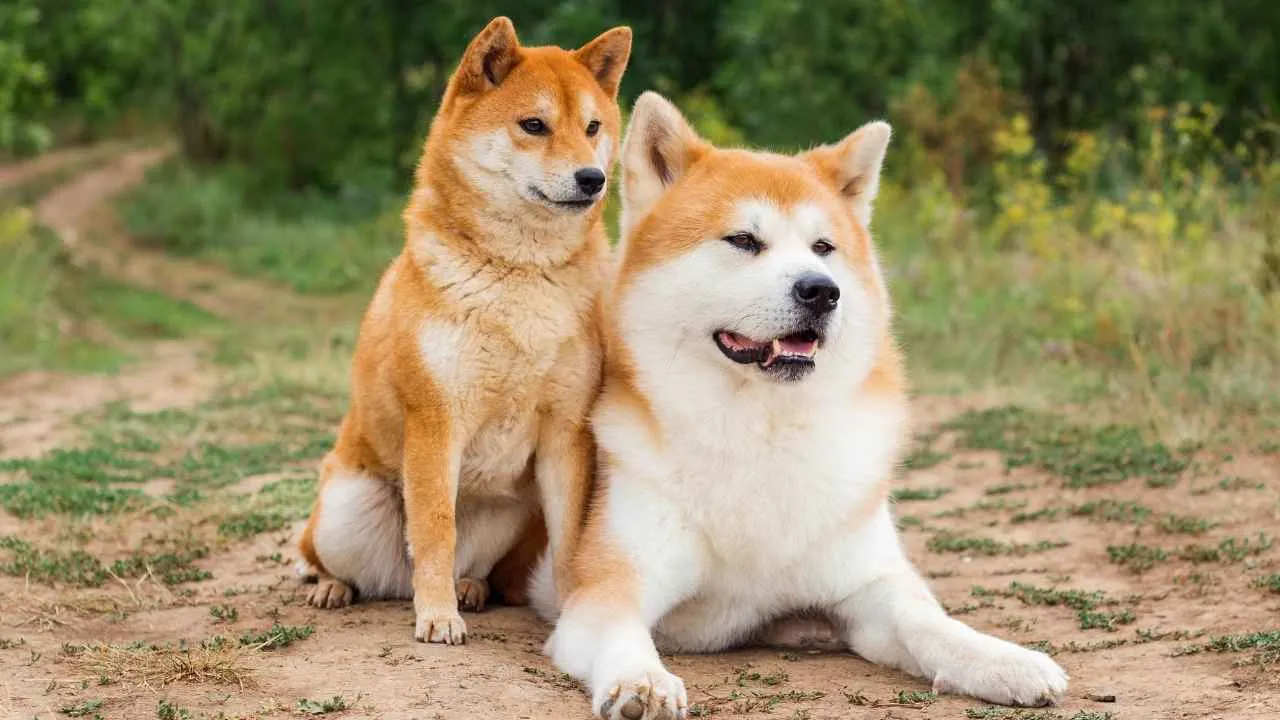
With deep roots in Japan, the Akita—also known as the Akita Inu or American Akita—is a large, powerful breed originally developed to guard royalty and hunt big game. They are one of the best guard dogs.
This breed is dignified, muscular, and well-proportioned, with males standing between 24 to 28 inches and weighing 70 to 130 pounds, while females are slightly smaller.
The Akita’s thick double coat comes in a variety of shades, including red, fawn, black, and brindle. Their curled tails, erect ears, and foxlike expression make them instantly recognizable. Life expectancy ranges from 10 to 13 years, and they belong to the Working Group.
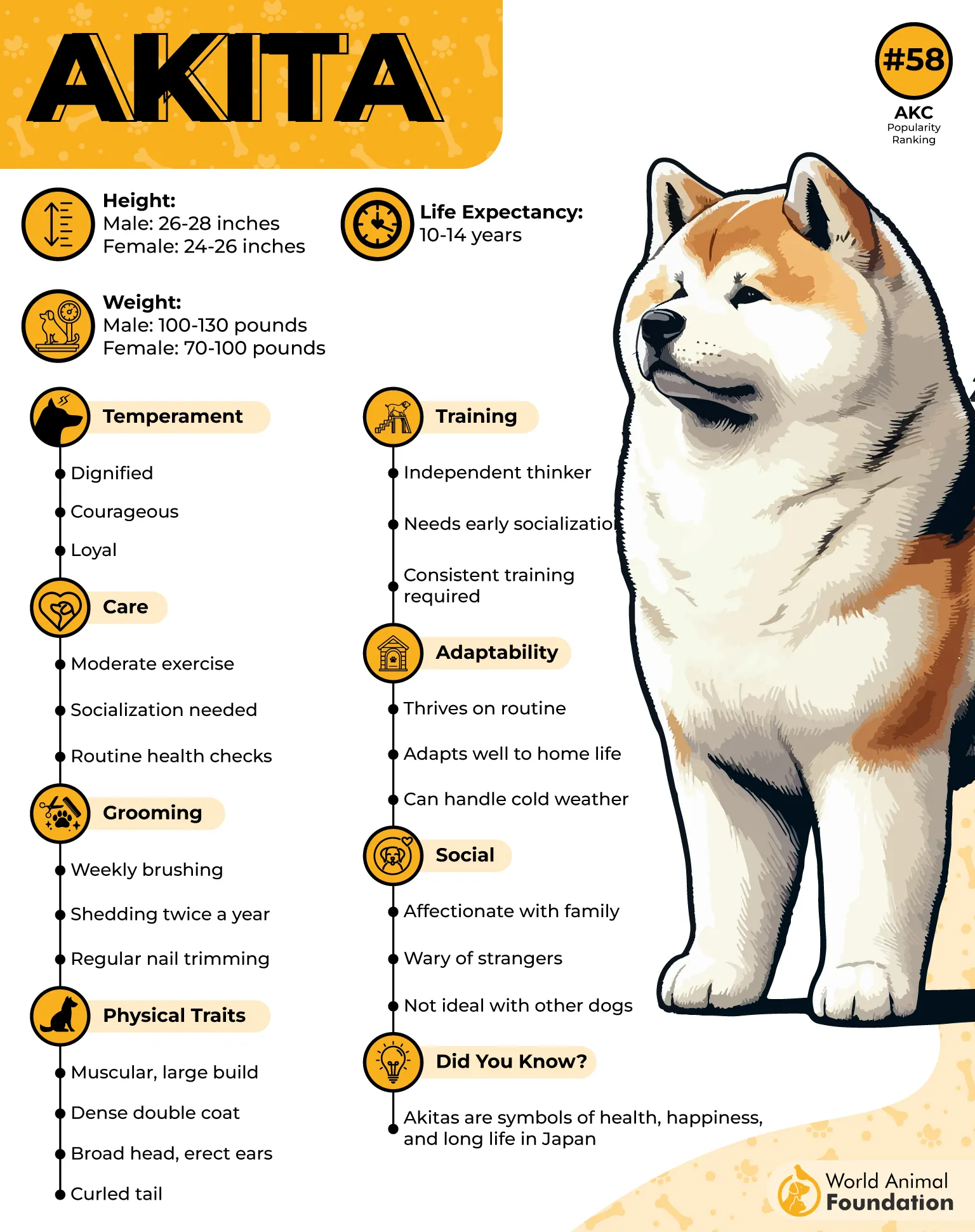
Ideal Owner
Akitas thrive in homes with experienced dog owners. Their strong will and independence require a handler who can confidently guide them.
Families with an active lifestyle are a great fit, especially those who can take their Akita on regular adventures. Due to their deep loyalty and sensitivity, Akitas form close bonds with their household, including other pets, but must be introduced carefully and early.
Did you know? In Japan, Akitas are revered as symbols of health and good fortune, and statues of the breed are often given to new parents as a blessing.
6. German Shepherd
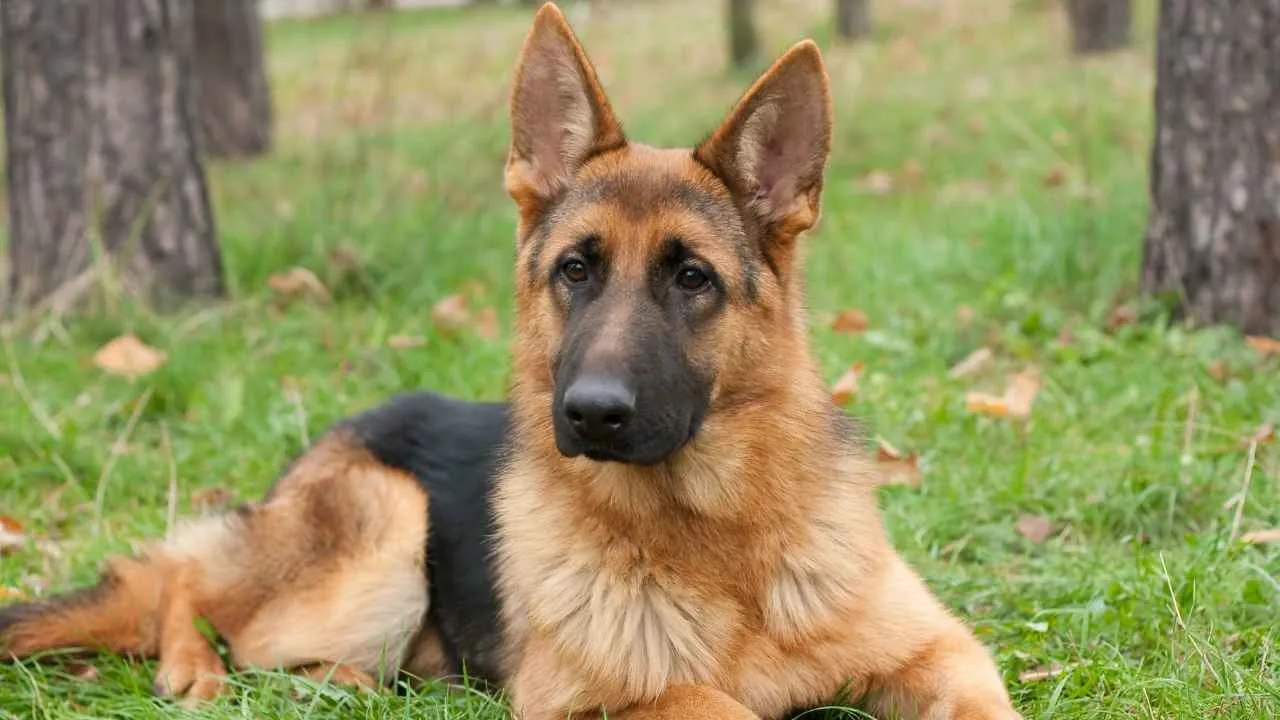
The German Shepherd, also known as the Alsatian, is a legendary breed admired for its intelligence, loyalty, and protective nature. Originating in Germany in the late 19th century, it was developed by Max von Stephanitz to be the ideal working dog.
Today, German Shepherds are recognized for their service in police, military, and rescue work. These large dogs stand 22 to 26 inches tall at the shoulder and typically weigh between 60 and 100 pounds.
They have a coarse, medium-length double coat in a range of colors and are known for their upright ears, keen gaze, and athletic build. Belonging to the Herding Group, they usually live 7 to 10 years.

Ideal Owner
German Shepherds are best suited for active individuals or families who can provide plenty of mental and physical stimulation.
They thrive under confident owners who can offer structure and purpose. Experienced pet parents will appreciate their eagerness to learn and their capacity for bonding deeply with all members of the household—humans and other animals alike.
Fun Fact: German Shepherds once served as “mercy dogs” during World War I, comforting wounded soldiers until medical aid arrived.
7. Doberman Pinscher
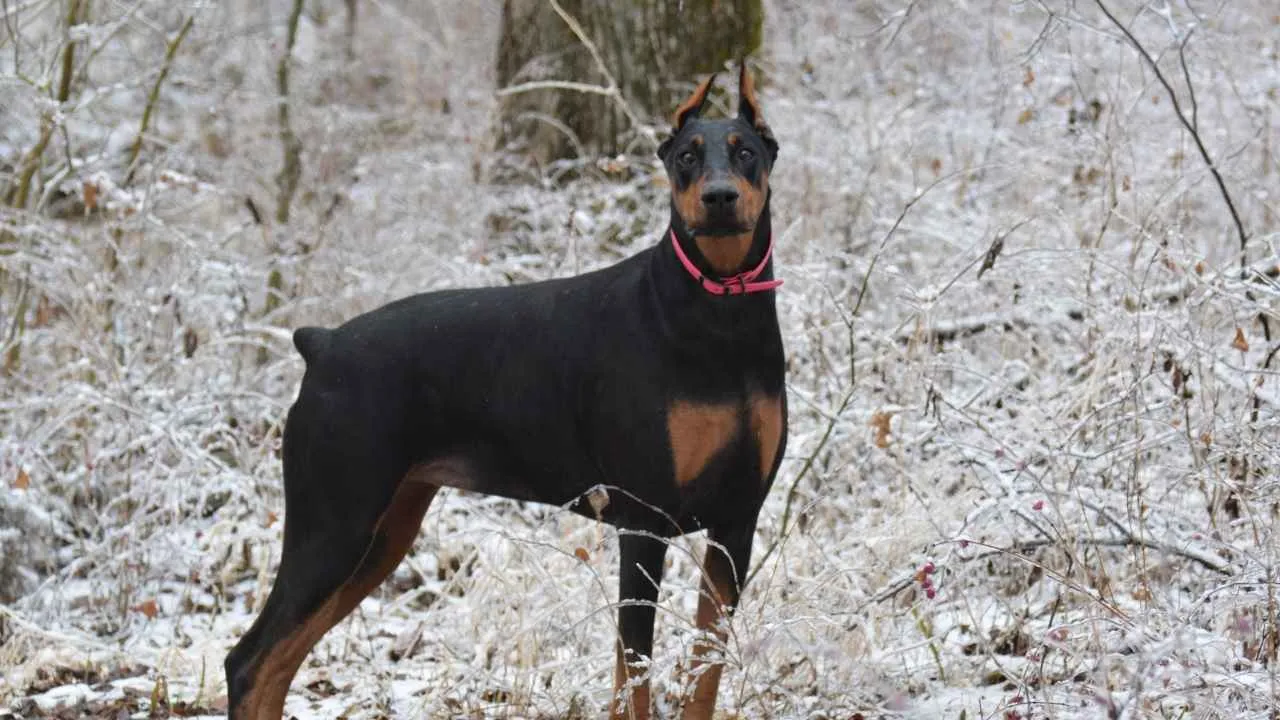
The Doberman Pinscher, often simply called the Doberman, is a sleek, powerful member of the AKC’s Working Group. Developed in Germany by Karl Friedrich Louis Dobermann in the late 19th century, these dogs were originally bred for personal protection.
Today, they are valued as intelligent, loyal, and alert companions. Males typically stand 26 to 28 inches tall and weigh between 75 to 100 pounds, while females range from 24 to 26 inches and 60 to 90 pounds.
Dobermans have a short, smooth coat that comes in striking colors such as black, red, blue, or fawn. Their athletic build, confident stance, and expressive almond-shaped eyes give them a noble presence. They typically live 10 to 12 years and are widely respected for their courage and trainability.
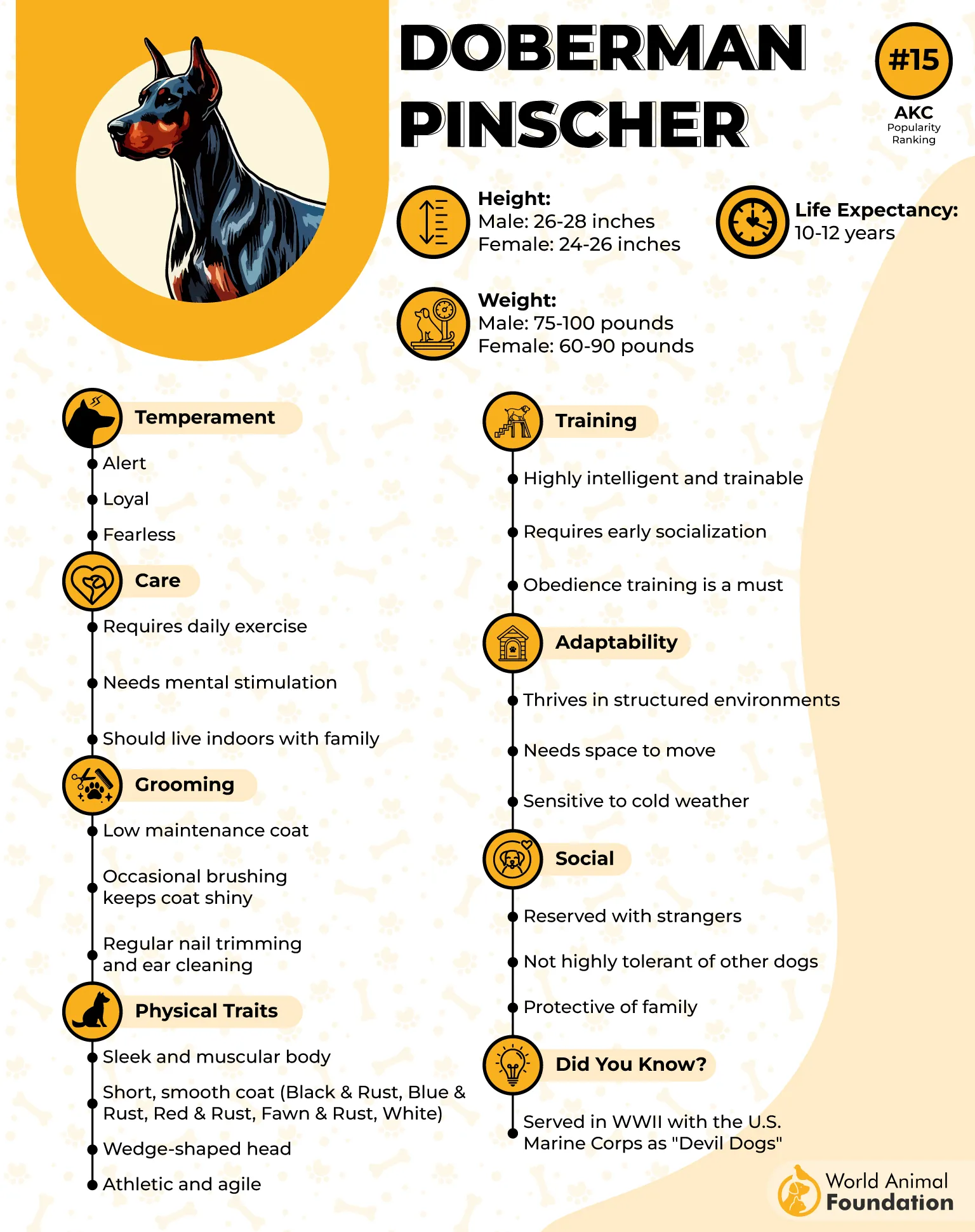
Ideal Owner
The ideal Doberman owner is experienced, assertive, and active. These dogs thrive under consistent leadership and require physical and mental stimulation daily.
They are not best suited for families with small children or timid pet owners, as Dobermans can quickly pick up on uncertainty. When trained and socialized early, they are capable protectors—guarding both people and pets in their home with instinctive dedication.
Interesting fact: Despite their fierce reputation, these canine friends are often playful and goofy with their human family, forming deep emotional bonds.
Conclusion
Choosing a dog that instinctively guards other pets can bring both protection and harmony to a multi-animal household. Breeds like the Doberman Pinscher, with their deep loyalty and alert temperament, naturally extend their protective instincts to include smaller or more vulnerable companions. These intelligent dogs often exhibit behaviors found in top-tier police dog and rescue dog roles—always watchful, brave, and eager to protect. With proper training and early socialization, many guarding breeds become nurturing additions to homes with other dogs, creating a balanced environment for all pets involved.
While their loyalty runs deep, many of these breeds also bring traits like a loud bark or a heightened sense of awareness that makes them excellent watchdogs. However, not every breed is eager to please—some are independent dogs that require alert owners who understand their boundaries and needs. When matched with the right family life and daily structure, these dogs can thrive as both protectors and affectionate members of the household.


